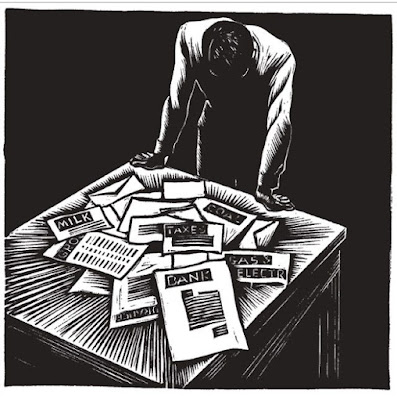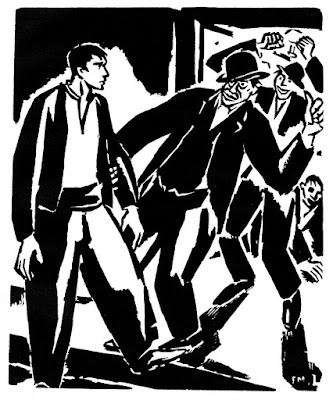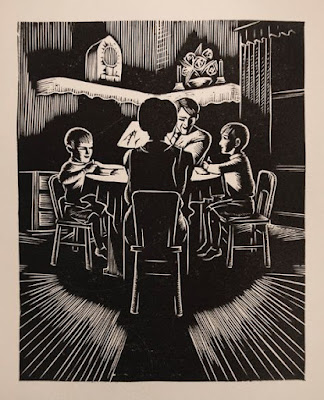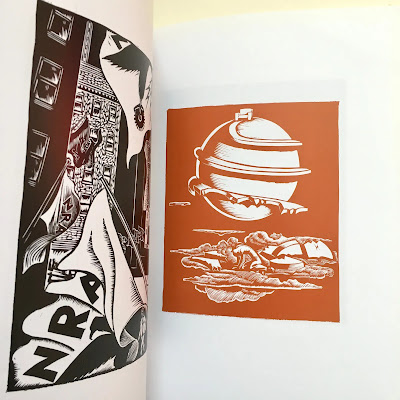Telling a story purely with illustrations is a challenge not unlike making a silent movie. There can be dramatic moments of action or conflict in a wordless graphic novel. Or the images can enshrine reflective and poetic moments.
But the connective tissue of a story, such as internal thoughts, sounds, or intentions can be challenging to convey.
Wordless stories flourished in Europe and America in the 1920s, '30s, and '40s, in part inspired by dramatic visuals of the silent movie era and expressionist art of the time.
In turn these works have inspired many contemporary comic artists, though the development of these wordless picture-stories is mostly independent of the pop-culture origins of modern comics.
Many of the artists used the time consuming method of woodcuts for their illustrations, which allowed artists to produce small runs of books, which have been prized by collectors ever since.
The best known member of this group was Lynd Ward (1905-1985), who produced several stories without words such as God's Man and Madman's Drum, but there were other artists who contributed to the genre such as Frans Masereel (1889-1972), Giacomo Patri (1898-1978), Erich Glas (1897-1973), and Laurence Hyde.
The works of all of those artists are featured in the new book Graphic Witness: Five Wordless Graphic Novels, selected and edited by George A. Walker, himself a woodcut artist and professor.
The large trade paperback book consists of a separate image reproduced on each page, beautifully reproduced in black and white and occasionally a red-brown on good paper.
Here's more information about Graphic Witness: Five Wordless Graphic Novels.







A completely different example of illustrations conveying a story without text are the "Wordless Workshop" cartoon strips of Roy Doty spanning decades from Popular Science through to The Family Handyman. Creative into his 90s.
ReplyDeleteThank you for posting this, James. Very timely for me personally since I am absorbed in studying linocut techniques as part of my art.
ReplyDeleteInteresting that the book cover in your post omits Erich Glas, and reads, "Four Wordless Graphic Novels" instead of five. Is that a previous edition?
Thanks again,
Bill
Bill, you're right, thanks for mentioning it. I think I have the cover of the correct edition up now.
ReplyDeleteA brilliant modern example is Shaun Tan's 'The Arrival'.
ReplyDelete